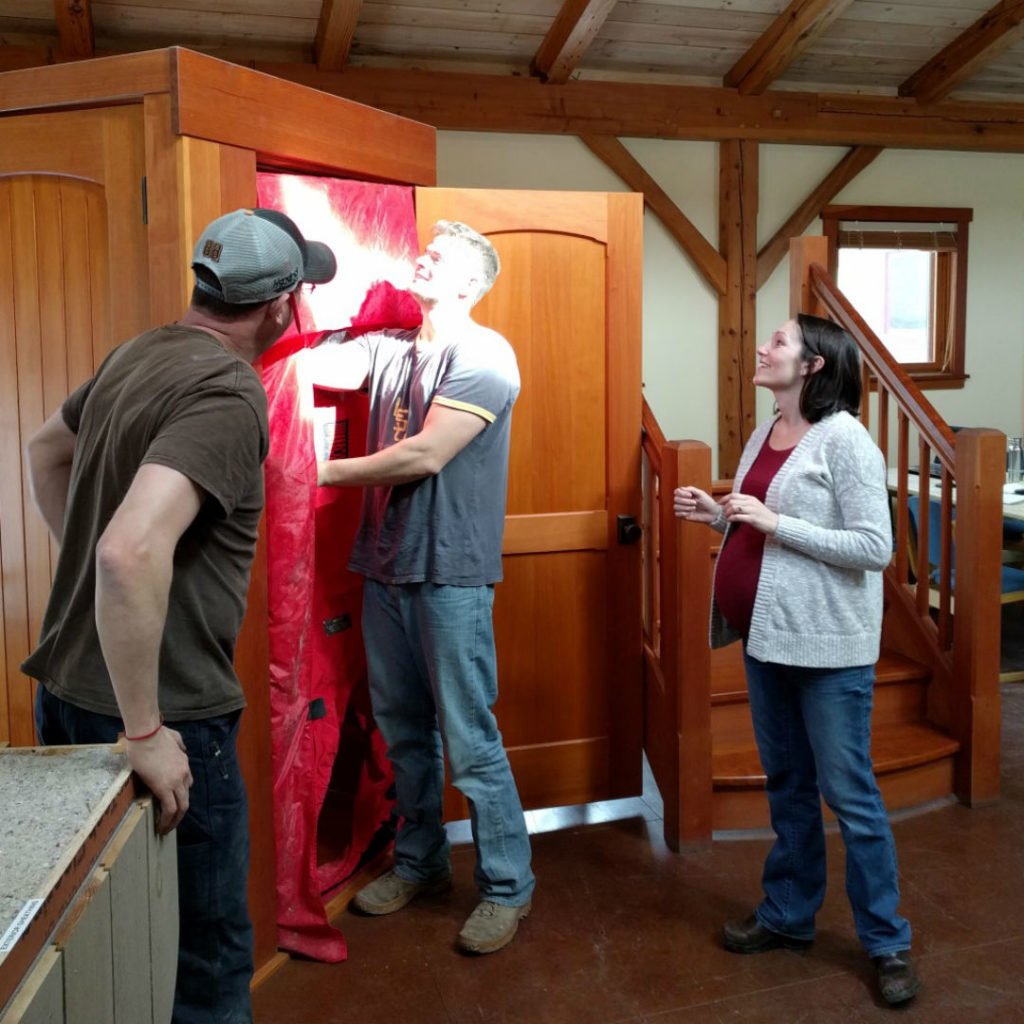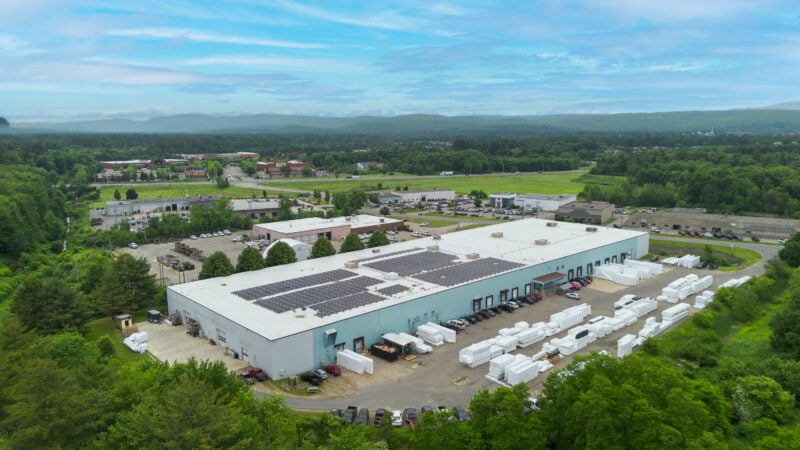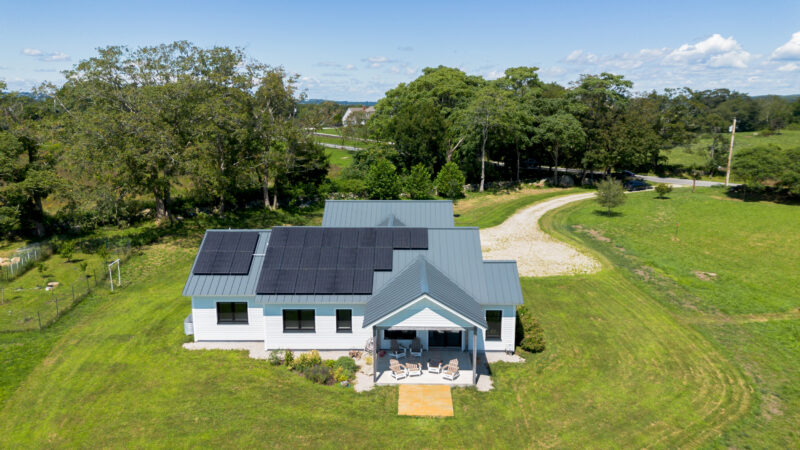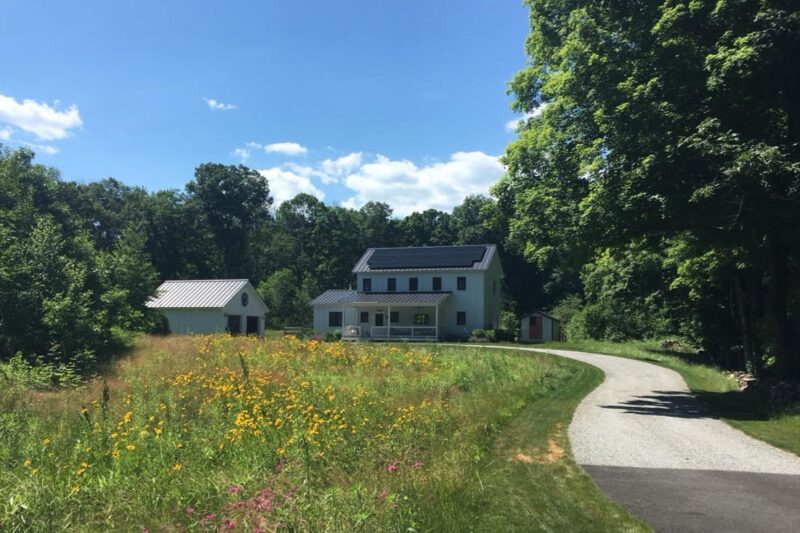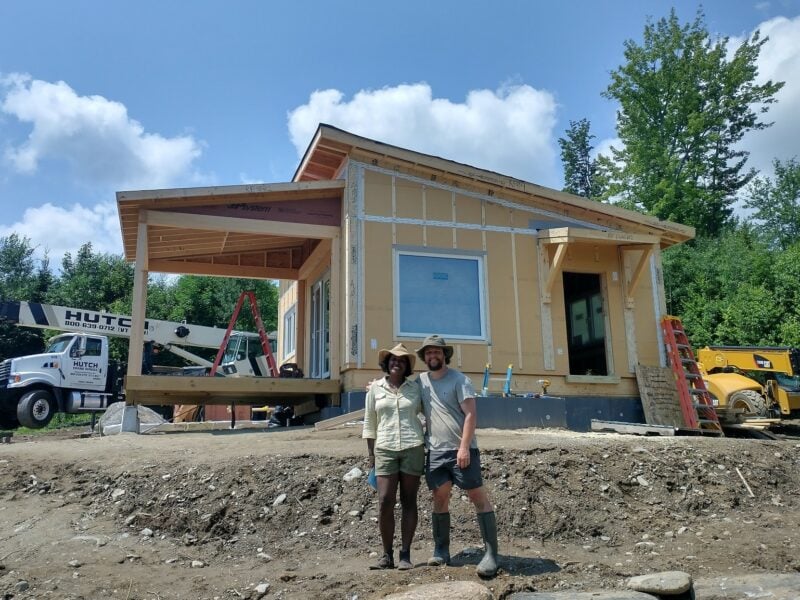At Unity we have strong tradition of education and training, because our work requires that we stay current with the latest tools, materials and systems applicable to high performance homes. One such tool, which is slowly making its way into the mainstream, is the blower door. By allowing us to measure the airtightness of a house during and after construction, blower doors provide an important indication of how the home will perform.
We test every home we build with a blower door—typically after the mechanical, electrical and plumbing systems have been roughed in, but before the home is sheetrocked. This allows us to seal any leaks in the air barrier relatively easily. Depending on the certifications being sought by the project, we may test the home a second time when it is completed.
Unity’s energy and sustainability specialists, Rheannon DeMond and Alison Keay, have been performing most of the blower door tests, but this requires that one of them visit the job site. We recently decided to streamline the process by training our “Montage” job captains to perform blower door tests when they are on site. By running the blower door while searching for and sealing air leaks, our building systems teams are able to turn good building envelopes into great ones in a few hours.
Rheannon and Alison initiated the training last week for three job captains. The trainees were enthusiastic.
“It’s satisfying work,” says job captain Tobey Wandzy. “Our building shells tend to be very tight after we complete the assembly process, but it’s great to watch the CFM50 number on the blower door drop even lower as we seal up any miscellaneous air leaks.” A lower CFM50 number reflects a tighter house and greater energy efficiency.
The more advanced energy codes adopted in the US require that all new homes be blower door tested, and they specify a minimum requirement for airtightness. Unity Homes always test far better than these standards. Our goal is to reach an airtightness level equivalent to one air change per hour (1.0 ACH50)—and it’s not unusual for us to exceed the rigorous Passive House airtightness standard of 0.6ACH50. In other words, extremely tight.
What about that old adage that “houses need to breathe”? Building scientists have repeatedly debunked this myth, which has been replaced by a different mantra: “build tight and ventilate right.” The blower door helps us to build tight—for energy efficiency, and heat recovery ventilation systems ensure that we ventilate right—for healthy indoor air. In a Unity Home, energy efficiency and occupant health go hand in hand.
To learn more about Passive House, read our Introduction to Passive House Principles and Design.
